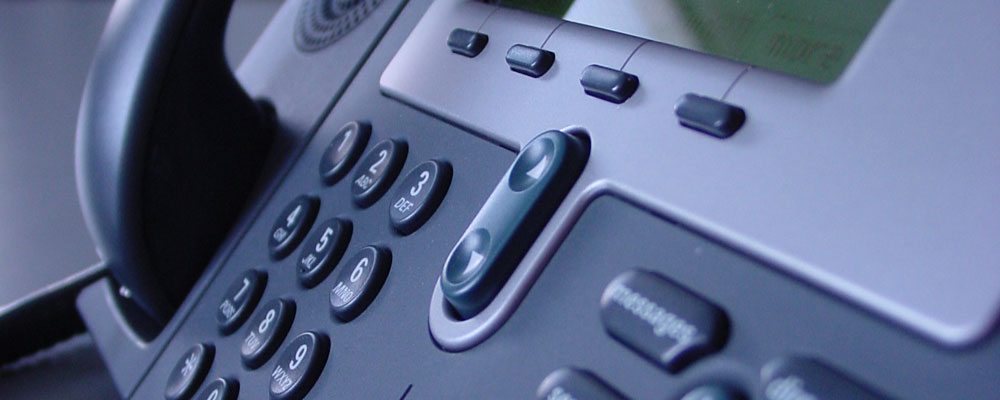
When it’s time to replace your old traditional phone system there are a number of Internet Protocol (IP) based solutions that are available to small business. The challenge is to select the system to suit your needs so that you can fully reap the rewards of cost efficiency and increased productivity. Before you purchase, it’s an idea to understand more about the underlying technology that will support your business today and into the future.
There are two terms that you may come cross when shopping for a new system – SIP (Session Initiation Protocol) and VoIP (Voice over Internet Protocol). When looking into these technologies it may seem like these are either/or options. So let’s clarify this up-front: VoIP refers to a group of protocol technologies (both proprietary and open) that enable calls to be made over the internet, while SIP is one of the many protocols that enable VoIP.
It can be confusing when shopping for a new system given the acronyms involved so let’s go into this with a bit a more detail.
FOLLOWING PROTOCOL
Firstly, why is protocol important? Internet phone systems depend on protocols to function. Protocols determine technology rules and parameters that enable digital devices, phone systems and computers to communicate with each via message exchanges. Protocols also dictate the very nature of that communication and therefore create an essential rule book that can be followed by developers to create “end points” or devices such as computers, smartphones, tablets or printers.
VOIP PRIMER
VoIP technology lets you use the internet to make and receive telephone calls instead of using traditional phone lines. It works by breaking down an audio signal into very small segments that are converted into code that are transmitted over the internet.
For VoIP you need a broadband Internet connection, a traditional phone and an adapter; a VoIP-enabled phone; or VoIP software on your computer.
VoIP systems function from a central network that manages traffic. This leads to cost savings as there’s only one network for your voice and data with one supplier. With a broadband connection you can make PC to PC phone calls for free, anywhere in the world. You can also make PC to phone calls for a modest fee. You have the option of paying as you go or can subscribe to a VoIP service provider and pay a monthly fee that gives you unlimited calls.
With a VoIP phone system, your phone number is virtual allowing you to take it with you when you change premises or are on the road. VoIP also gives you a range of communication extras like call forwarding, voicemail and caller ID. You can also add videoconferencing at a reasonable price.
This means they can become overloaded when your network has volumes of data, creating lag times in communication. For this reason, this protocol is a good option for small businesses for mainly voice communications requiring fewer locations.
As they connect directly in the data network, to activate a call you just lift the receiver. Your chosen service provider then links your handset via the internet to the regular phone system.
VoIP helps you to reduce costs due to a number of factors including reduced equipment and line rental charges; reduced long distance call charges; reduced hardware and maintenance costs; and flexible subscription plans that allow you to select a plan best suited to your usage requirements.
SIP – A POWERFUL PROTOCOL
When shopping for a new phone system you may also come across SIP (Session Initiation Protocol). This is a “signalling” protocol that’s used in VoIP communications and allows voice, video calls, internet conferencing and instant messaging. It has become a popular VoIP protocol with companies that provide unified communication (UC) solutions. UC applications give your business voice, video and streaming media capabilities like web conferencing.
To explain it differently, SIP is the underlying technology that starts a voice communication session over the internet (or another type of data network). This might be a VoIP phone call between two people or conference call with several parties.
This form of IP telephony uses SIP trunks and does the same job as a traditional phone line. No longer physical wire, these virtual phone lines or trunks connect your phone system back to the phone provider’s network.
SIP Trunking is another term you may come across when researching new phone systems. The SIP Protocol enables SIP Trunking, a virtual connection to the regular phone network or public switched telephone network (PSTN) over a physical line that is often shared over your existing data connection. SIP Trunking uses a packet switched model for making voice connections between people over a data network. When it’s combined with IP PBXs and IP VPNs it can transform the way your business handles phone calls and multimedia applications like video and unified communications.
By using SIP Trunking you can rationalise disparate legacy networks and reduce costs. It’s also an ideal way to introduce unified communications and multimedia.
SIP Trunking can help your business to replace ISDN and analogue phone lines with a simpler, more cost-effective alternative. Also, you can centralise your IP PBX to reduce equipment and carriage costs as well as provide a more consistent experience for your customers. And finally you can “converge” your voice and data networks to help reduce costs and use your bandwidth more efficiently.
SIP is designed to handle heavy data flow as the processing is not centralised. As a result, SIP is used by businesses with a lot of branches or remote workers that need multimedia communications.
SIP Trunking allows the voice and data traffic in your business to be carried over a single private IP virtual private network (VPN). This means you can reduce overall line rental and bandwidth costs as well as simplify maintenance as you have a single network.
Telephone systems are an important part of every small business. The terminology involved can be confusing. However, by understanding a little more about the underlying technologies you’re in a better position to make the right choice for your unique needs.
To find out more about communications options that’s right for your business, contact one of the friendly staff at eStorm.


